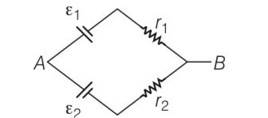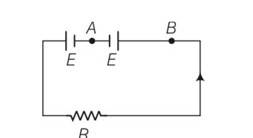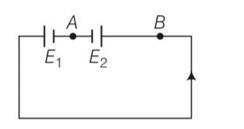Physics Ncert Solutions Class 12th
Get insights from 1.2k questions on Physics Ncert Solutions Class 12th, answered by students, alumni, and experts. You may also ask and answer any question you like about Physics Ncert Solutions Class 12th
Follow Ask QuestionQuestions
Discussions
Active Users
Followers
New answer posted
4 months agoContributor-Level 10
This is a Multiple Choice Questions as classified in NCERT Exemplar
Answer – (c)
Explanation – R/S= (l1/100-l1)= 100 (2.9/100-2.9)= 100/97.1=2.98ohm
So he should change S to almost 3 ohm and repeat the experiment.
New answer posted
4 months agoContributor-Level 10
This is a Multiple Choice Questions as classified in NCERT Exemplar
Answer- (a)
Explanation- eeq=
New answer posted
4 months agoContributor-Level 10
This is a Multiple Choice Questions as classified in NCERT Exemplar
Answer- (b)
Explanation- as we know that J=E, and current density is directly proportional to electric field, so electric field produced by charges accumulated on the surface of wire.
New answer posted
4 months agoContributor-Level 10
This is a Short Answer Type Questions as classified in NCERT Exemplar
Explanation- according to ohms law
I=
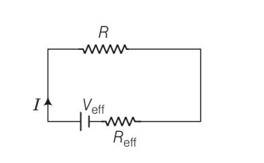
If voltage and resistance increase
V'= nVeff, R'= nReff
I'= =
New answer posted
4 months agoContributor-Level 10
This is a Short Answer Type Questions as classified in NCERT Exemplar
Explanation- R= /A
Resistance of first conductor, RA= 2
Resistance of second conductor, RB=
Now ratio = 3:1
New answer posted
4 months agoContributor-Level 10
This is a Short Answer Type Questions as classified in NCERT Exemplar
Explanation- according to ohms law
I=
The potential difference across terminal is
V=e-Ir= E- r1=0
E=
1=
R+r1+r2 = 2r1
R= r1-r2
New answer posted
4 months agoContributor-Level 10
This is a Short Answer Type Questions as classified in NCERT Exemplar
Explanation- when all resistance are in parallel
by multiplying this equation by Rmin we have
But there exist a term in RHS and other terms are positive so we have
>1
This shows that equivalent resistance is less than maximum resistance available.
But when all resistance are in series
Rs =R1+R2………Rn
here must be Rmax value in RHS
Rs= R1+……Rmax+….Rn
And Rs> Rmax
So equivalent resistance is less than Rmax
New answer posted
4 months agoContributor-Level 10
This is a Short Answer Type Questions as classified in NCERT Exemplar
Explanation-
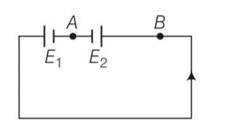
total resistance = 2+8= 10 ohm
I= = 0.2A
The direction of flow of current is always from high potential to low potential
If VB VA
VB-4V-0.2 8 = VA
VB-VA= 3.6V
New answer posted
4 months agoContributor-Level 10
This is a Short Answer Type Questions as classified in NCERT Exemplar
Explanation – in series combination of resistors current I =e/R+r
10I=
10 = ( )n n=10
New answer posted
4 months agoContributor-Level 10
This is a Short Answer Type Questions as classified in NCERT Exemplar
Explanation- according to the relation V=e-Ir and I=e/r+R
The graphical relation between voltage and resistance.
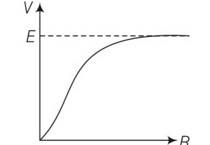
Taking an Exam? Selecting a College?
Get authentic answers from experts, students and alumni that you won't find anywhere else
Sign Up on ShikshaOn Shiksha, get access to
- 65k Colleges
- 1.2k Exams
- 686k Reviews
- 1800k Answers

